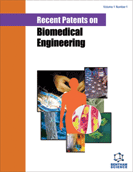Abstract
Four decades have passed since the first recombinant protein, somatostatin, was produced in Escherichia coli. To date, more than 160 biopharmaceuticals gained medical approval. As there is an increasing demand for new protein-based biopharmaceuticals and proteins used in diagnostics, novel or improved host organisms and expression systems are constantly being developed. Nevertheless, E. coli is still one of the most commonly used organisms for the production of recombinant therapeutic proteins. Despite many improvements of E. coli expression system, one major setback is protein aggregation and inclusion bodies (IBs) formation. These often cannot be prevented from forming during recombinant protein production. For a long time IB formation represented a problem in protein production. However, recent studies on bacterial cultivation and protein aggregation revealed that friendlier bacterial cultivation leads to production of non-classical IBs (ncIBs), which are composed of properly folded and biologically active proteins. Such active ncIBs can be used either for protein isolation (production) or as active nanoparticles. Since the field of nanobiotechnology is evolving fast, a further development of the use of active IBs is expected.
Keywords: Bacterial cultivation, E. coli, inclusion bodies, nanoparticles, protein aggregation, recombinant protein production, recombinant protein, somatostatin, cytoskeleton, biotechnology, cytoplasmic redox state, plasmids, isopropyl-D-1-thiogalactopyranoside, glycosylation, chaperone, excD gene, excC gene, lpp gene, viral proteins, Nucleic acids, polyethyleneimine, 6M Guanidinium hydrochloride, glutathione, chromatography, gingivitis, periodontitis
 4
4

